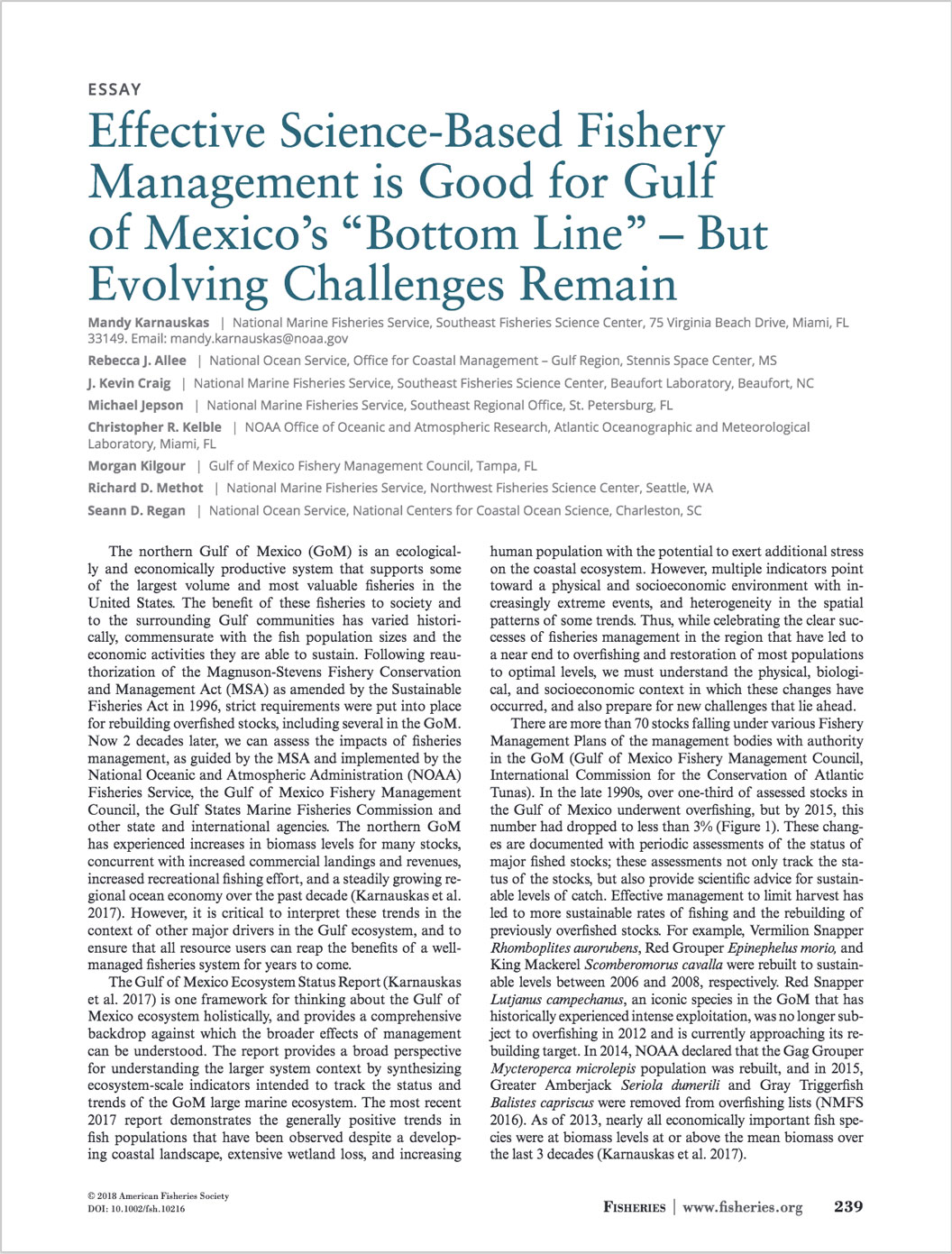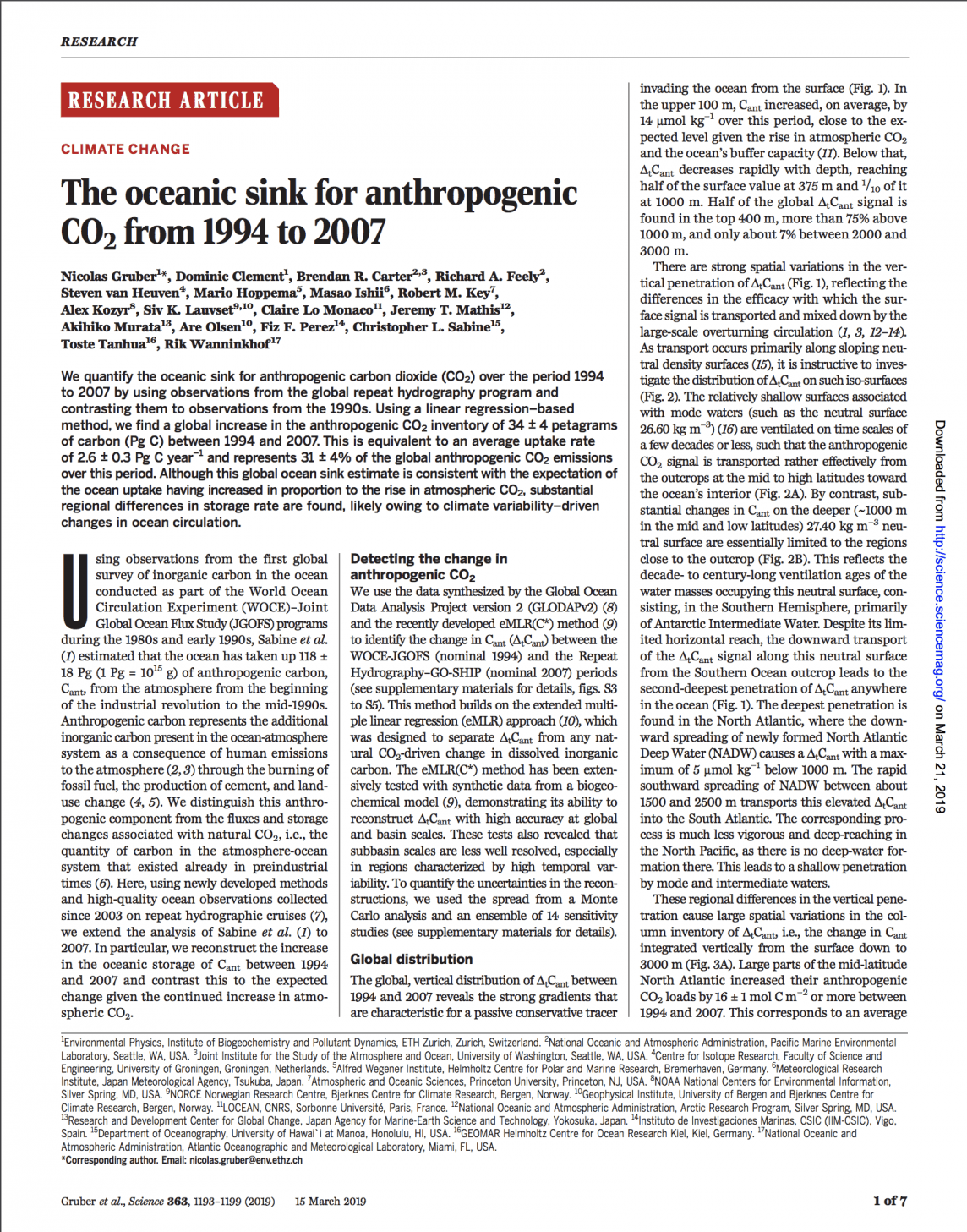Introduction: The northern Gulf of Mexico (GoM) is an ecologically and economically productive system that supports some of the largest volume and most valuable fisheries in the United States. The benefit of these fisheries to society and to the surrounding Gulf communities has varied historically, commensurate with the fish population sizes and the economic activities they are able to sustain. Following reauthorization of the Magnuson‐Stevens Fishery Conservation and Management Act (MSA) as amended by the Sustainable Fisheries Act in 1996, strict requirements were put into place for rebuilding overfished stocks, including several in the GoM. Now 2 decades later, we can assess the impacts of fisheries management, as guided by the MSA and implemented by the National Oceanic and Atmospheric Administration (NOAA) Fisheries Service, the Gulf of Mexico Fishery Management Council, the Gulf States Marine Fisheries Commission and other state and international agencies. The northern GoM has experienced increases in biomass levels for many stocks, concurrent with increased commercial landings and revenues, increased recreational fishing effort, and a steadily growing regional ocean economy over the past decade (Karnauskas et al. 2017). However, it is critical to interpret these trends in the context of other major drivers in the Gulf ecosystem, and to ensure that all resource users can reap the benefits of a well‐managed fisheries system for years to come.
The Oceanic Sink for Anthropogenic CO2 from 1994 to 2007
We quantify the oceanic sink for anthropogenic carbon dioxide (CO2) over the period 1994 to 2007 by using observations from the global repeat hydrography program and contrasting them to observations from the 1990s. Using a linear regression–based method, we find a global increase in the anthropogenic CO2 inventory of 34 ± 4 petagrams of carbon (Pg C) between 1994 and 2007. This is equivalent to an average uptake rate of 2.6 ± 0.3 Pg C year−1 and represents 31 ± 4% of the global anthropogenic CO2 emissions over this period. Although this global ocean sink estimate is consistent with the expectation of the ocean uptake having increased in proportion to the rise in atmospheric CO2, substantial regional differences in storage rate are found, likely owing to climate variability–driven changes in ocean circulation.

